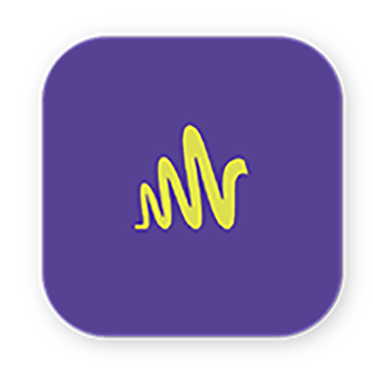Julie Ford 25:28
So with all of this, it sounds like reaching deskless workers can feel really daunting for internal communications professionals. Do you have any resources that you could recommend to people who want to figure out this complex puzzle?
Priya Bates 25:43
Resources? That's a good question. I mean, there's a, we talked about the technologies, but the technologies are only as good as the communication professionals who are using them, and the leaders who are using them to disseminate information. So whenever we go into organizations, we start with the research. And you can do that research yourself, if you know how. But you could also bring in companies like us to, to come in and do those audits, because we're able to talk to your people, right, so so there's the technology that will does make it easier to connect and have access to those workers, but having conversations, to ask them what they need and what they want. None of them are saying none, it doesn't matter if I'm talking to a manufacturing floor, nurses out in the field, you know, as part of a union environment, it doesn't matter who I'm talking to, they're not saying stop talking to us. What they're saying is give us the information we need in a timely manner. And also have some balance. So we managers, we can't be over reliant on managers and supervisors, but we also can't not include them in the process, right? Because I've heard boast, I worked for technology companies, where they decided, hey, it's easier just to go straight to the worker, let's forget the managers is going to make everybody's job easier. And what the managers found themselves is they didn't have the answers to questions, they weren't able to, to have an honest conversation, because they were finding things out, it's at the exact same time as their employees, and they were, they were shrugging their shoulders, and that puts their credibility at risk. So it's really about understanding your system, because every system is different. We do learn from audit to audit, what works for organizations, but each organization is different. Each set of leaders and how they communicate successfully is different. So really coming in, understand your organization's leaders, and how to connect those dots is a great place. It's the planning, and then how you actually use the technology to disseminate the right information to the right people at the right time, that is actually read and relevant is the magic, right? So there is work there strategy and thinking and planning that needs to take place in order for you to use all that technology successfully. And maybe also decide if you don't have technology, what's the best technology for you,
Mike 28:14
I would take a slightly different tack in terms of how to you know what to do first to break things down. I mean, I think even before you do, research, you've got a you know, if you're if you're a communications person, or even an HR person, and a organization, which has a significant whether it's a majority, whether it's just a critical 10%, or what have you, of so called deskless workers. First of all, you need to break down who your deskless workers are. So if you're a hospital, your doctors and nurses are going to have very different information needs from your orderlies, or people working in your on site childcare facility. So just simply treating employees as a monolith, or treating deskless workers as a monolith, is exactly the opposite approach from what you can take. Second is for us to do that, you know, as particularly those of us who think strategically about internal comms, we need to change the strategic frame we use, we need to stop thinking about the old fashioned think, feel do model. And we've got to focus on what I call, do no feel say and you start with what people are supposed to do. So what are the actions that we need people to take in order to deliver a consistent experience in order to meet business priorities in order to to to deliver roles in a safe and, you know, consistent matter? And then from that basis of what people are supposed to do, then you figure out what they need to know. You figure out how you want them to feel does everybody need to sing the company fight song every five minutes? Or do people just simply not need to resist stuff that's going on in the organization? And then capture to a certain extent what people are saying, because anything you ask in an open ended question, for instance, is something that somebody is going to have said something to somebody to somebody else before. So you look at it from a do not feel safe bird's eye perspective. And then you segment and then you know, do you need to give 40,000 People an account on your intranet? Or do you give the 5000 people who have jobs that have direct leverage over certain things, those that access first, and then you figure out what information they need in order to be able to do what they're supposed to do.
Priya Bates 30:47
And at the end of the day, remember that internal communication does not sit in a vacuum. Right? Employees are hearing information from a lot of different sources, and there's opportunity to embed a lot of communication into operations. So working collaboratively with tech, or marketing or human resources, or operations is is such an incredible opportunity for creating that consistence consistency and connection in the places employees already are. And then supplementing where they already are with additional information that provides more context from a timely perspective.
Julie Ford 31:35
Absolutely, that makes a lot of sense. So to conclude the conversation, I just wanted to ask you both. If you have any final advice for companies that are looking to reach deskless workers,
Priya Bates 31:47
I'd probably you know, as Mike said, understand who your organization is, understand who those deskless workers are in and do your analysis on them. Talk to them, ultimately, that I mean, that's the work that I love, is when I'm talking to employees, especially those employees in the field. People know what they need and what they want. And the majority of them want to do their work successfully. Right? They want to feel that they've got purpose. They want to build pride. There, they're not trying to sabotage. Right? But no, nobody does that on purpose. I'm an optimist. From that perspective, we've got most people in the world who want to deliver and work with purpose every day, we spend more time at work than we do with our families sometimes. And so it's really, you know, really understanding your audience understanding their needs, having conversations versus thinking about the campaign. So I always say it's, this is more about the conversation we're having with our employees and with one another, versus creating these one point in time campaigns that you put a lot of money and effort into, but then go away. We launch and we leave. And that that tells a very different story to your employees, especially those justice to workers.








.webp?width=171&height=171&name=headshot%20(1).webp)



.webp?width=480&name=email%20banner%20(5).webp)
.webp?width=480&name=email%20banner%20(4).webp)
